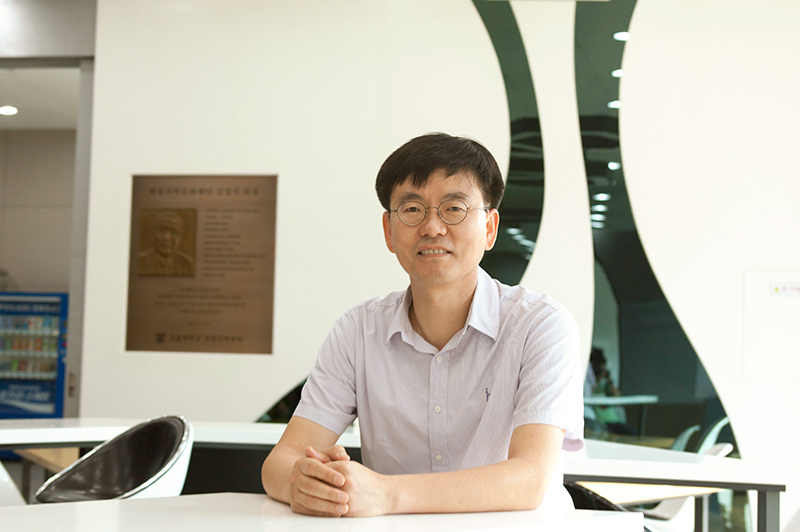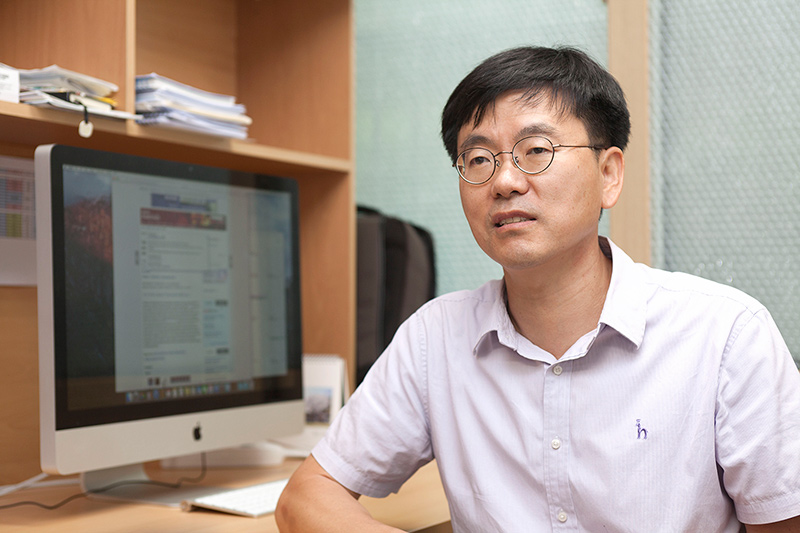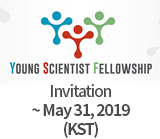주메뉴
- About IBS 연구원소개
-
Research Centers
연구단소개
- Research Outcomes
- Mathematics
- Physics
- Center for Underground Physics
- Center for Theoretical Physics of the Universe(Particle Theory and Cosmology Group)
- Center for Theoretical Physics of the Universe(Cosmology, Gravity and Astroparticle Physics Group)
- Center for Exotic Nuclear Studies
- Dark Matter Axion Group
- Center for Artificial Low Dimensional Electronic Systems
- Center for Theoretical Physics of Complex Systems
- Center for Quantum Nanoscience
- Center for Van der Waals Quantum Solids
- Center for Relativistic Laser Science
- Chemistry
- Life Sciences
- Earth Science
- Interdisciplinary
- Center for Neuroscience Imaging Research(Neuro Technology Group)
- Center for Neuroscience Imaging Research(Cognitive and Computational Neuroscience Group)
- Center for Algorithmic and Robotized Synthesis
- Center for Genome Engineering
- Center for Nanomedicine
- Center for Biomolecular and Cellular Structure
- Center for 2D Quantum Heterostructures
- Center for Quantum Conversion Research
- Institutes
- Korea Virus Research Institute
- News Center 뉴스 센터
- Career 인재초빙
- Living in Korea IBS School-UST
- IBS School 윤리경영


주메뉴
- About IBS
-
Research Centers
- Research Outcomes
- Mathematics
- Physics
- Center for Underground Physics
- Center for Theoretical Physics of the Universe(Particle Theory and Cosmology Group)
- Center for Theoretical Physics of the Universe(Cosmology, Gravity and Astroparticle Physics Group)
- Center for Exotic Nuclear Studies
- Dark Matter Axion Group
- Center for Artificial Low Dimensional Electronic Systems
- Center for Theoretical Physics of Complex Systems
- Center for Quantum Nanoscience
- Center for Van der Waals Quantum Solids
- Center for Relativistic Laser Science
- Chemistry
- Life Sciences
- Earth Science
- Interdisciplinary
- Center for Neuroscience Imaging Research(Neuro Technology Group)
- Center for Neuroscience Imaging Research(Cognitive and Computational Neuroscience Group)
- Center for Algorithmic and Robotized Synthesis
- Center for Genome Engineering
- Center for Nanomedicine
- Center for Biomolecular and Cellular Structure
- Center for 2D Quantum Heterostructures
- Center for Quantum Conversion Research
- Institutes
- Korea Virus Research Institute
- News Center
- Career
- Living in Korea
- IBS School
News Center
| Title | Investigating How Electrons Magically Work to Make High Temperature Superconductivity (HTS) – a journey to find the microscopic mechanism | ||||
|---|---|---|---|---|---|
| Name | Department of Communications | Registration Date | 2016-09-28 | Hits | 5199 |
| att. |
 thumb.jpg
thumb.jpg
|
||||
Investigating How Electrons Magically Work to Make High Temperature Superconductivity (HTS) – a journey to find the microscopic mechanism- KIM Chang Young, Associate Director of the Center for Correlated Electron Systems (CCES) and Professor at Seoul National University (SNU) -
Interview PreviewQ: What are strongly correlated materials? Q: Superconductivity has been your long-time research topic, right? Q: We heard that you resolved a 30-year-old mystery. Zero electrical resistance in superconductors below their critical temperatures. Therefore, we can maintain electrical current without a power source and even store electrical energy by using superconductors. Recently, a group at CCES published a paper on superconductivity and raised the hope for the discovery of a "dream" superconductor that can be used in an industrial scale. Commercial Applicability of Iron-based Superconductors"We significantly raised the critical temperature for an iron-pnictide superconductor and in that respect, its commercial application has become more attainable," explained Kim about the paper he published in Nature Materials online on August 16. The key to commercially usable superconductors is raising their critical or transitional temperatures, and his team succeeded in increasing the temperature by 17 K, from 24K to 41.7K (-249℃ to -231℃).
Since the 1986 discovery of a copper-based HTS which becomes superconducting at 35K (-238℃), the critical temperature of copper-based superconductors has been raised to 135K (-138℃) or higher, rendering their applications within commercial reach at least in terms of critical temperature. However, other roadblocks impede their actual commercial applications: High production costs using rare earth ingredients such as scandium and yttrium, and nonuniformed functions when mass produced. So, recent research has been directed toward cheaper and more manageable iron-based superconductors which are iron-pnictides or iron-chalcogenides. Doping effects, the transfer of electrons or electron holes to a superconductor using a minuscule amount of impurities or carriers, have been utilized to raise the critical temperatures of these iron-based superconductors. Kim and his team adopted this electron doping. They attached atoms of two alkaline metals, potassium (K) and sodium (Na), onto the surface of an iron-pnictide superconductor for electron transfer and succeeded in raising its critical temperature. "This result is meaningful not only because we achieved a higher transitional temperature but also because it has laid a cornerstone for building a unified theory which will explain superconductivity in both iron-pnictides and iron-chalcogenides," explained Kim. This is because by measuring the electron structures, the research has challenged the previous theory assuming a correlation between the nesting condition* and superconductivity in iron-pnictides. It demonstrated that the nesting condition is not an essential part of the superconductivity in iron-pnictides. * Nesting condition is a measurement of similarity between two different Fermi surfaces. As the similarity grows, the nesting condition becomes better. Conventionally, transitional temperatures of iron-pnictides were thought of being proportional to the nesting condition. Popular theories explained that iron-pnictides and iron-chalcogenides become superconducting in different working mechanisms and the nesting condition was related only with iron-pnictides. Two research groups based in Japan and in the US gave valuable help to Kim's team. In order to observe superconductivity, using an angle-resolved photoemission spectroscopy (ARPES) was necessary to measure the momentum and energy of an electron in solids and sophisticated samples are requisites for ARPES experiments. "We obtained high quality samples of Ba (Fe1.94Co0.06) 2As2, an iron-pnictide, from a team led by Dr. Masamichi Nakajima at Osaka University in Japan and conducted the ARPES experiments at the Advanced Light Source of Lawrence Berkeley National Laboratory in the US, the optimal facility for the deposition of alkaline metals on the surfaces of the samples," said Kim. "I have been submitting research proposals to secure time slots for experiments at ALS and Dr. Nakajima and me go way back to the days when he was working together for international joint research as a Ph.D. student." Toward a unified theory that explains all copper-oxide superconductorsKim' research did not start off with superconductivity in the beginning. As a graduate student at Stanford University in the department of Applied Physics, he has studied semi-conductor surfaces by analyzing photoelectrons with a photoelectron spectroscopy equipment he developed. After earning his Ph. D. he accepted an offer from Professor Zhi-Xun Shen and worked as a postdoctoral researcher at the Stanford Synchroton Radiation Lightsource (SSRL) for about six years. He was in charge of designing and constructing a beam line at SSRL in addition to his research. In 1995, Kim began researching copper oxides which take up a sizable portion of the known HTS group. "I studied chain-structured copper oxides and experimentally proved the spin-charge separation of electrons in them," said Kim. It was theoretically known that the spin and electric charge, two properties of an electron, behave together in normal conditions but can decouple as spinions and holons when electrons are in a one-dimensional solid. He found an experimental evidence for this decoupling phenomenon using synchrotron based ARPES, and reported the result in Physical Review Letters in 1996. Ten years later, he succeeded in observing distinctively split bands for spinions and holons. The results were published in Nature Physics in 2006. It was a complete experimental demonstration of the spin-charge separation. Later, Kim participated in pioneering research on iridium oxide, and also fully resolved the issue in the Rashba effect. "I recently got an important outcome from my long-time work on electron doped copper oxide HTSs. I am hoping that it will also lead to a unified theory to explain superconductivity in all copper oxides. We are currently preparing a paper on that," commented Kim. Electron-doped and hole-doped superconductors are the two types of copper oxide superconductors. As an expert on superconductivity, in particular, electron- doped copper oxide superconductors and iron-based superconductors, he worked as an editor for the Progress in Superconductivity and Cryogenics. He's also been serving as an executive of the Korean Superconductivity Society since 2011. "The first is discovery of a room temperature HTS and finding the microscopic theory that clearly explains the HTS mechanism." answered Kim when asked about the major issues in the field of superconductivity. About the roadblocks toward commercial applications of superconductors, "If the production process is simplified for HTSs, the production cost will go down which will enhance the possibility for commercial use." A project is going on in Korea to replace some parts of the power grid with superconducting cables.
"Next focus will be electron orbits"After 14 years with Yonsei University, what made him decide to join CCES? "For leading research, it is important to work together with researchers from the same field, not to mention enough funding support. I thought joining CCES would be a good opportunity to obtain this critical mass of researchers, "said Kim. The research at CCES is divided by groups with their own areas: Director NOH Tae Won's group studies infrared spectroscopy and the properties of thin films; Associate Director PARK Je-Geun's group focuses on the growth of single-crystal samples and the properties of magnetism; and Kim's group investigates the electronic structures of materials using ARPES. Commonly, strongly correlated materials are investigated in terms of their electronic structures and spin, but his focus in the future will be electron orbitals. He already explained the Rashba effect by identifying the bigger roles of electron orbitals (than spins) in spin-orbit-coupled materials*. "I plan to focus on electron orbitals such as the role of orbital degrees of freedom in superconductors." * Spin-orbit-coupled materials: The spin and orbital of an electron usually behave separately but may interact with each other when the material has a large atomic number. This spin-orbit interaction (coupling) is responsible for the Rashba effect, Spin Hall Effect (SHE) and the property of topological insulators. It is over one year since Kim has been designing and constructing the equipments in his lab. The construction is expected to be completed within the year, or if not, early next year. The existing ARPES eqipment, combined with a new piece will be reconstructed as an integrated system. "We can do more with the sum of the two that two isolated systems." explained Kim. "For example, we can grow a sample and experiment with it immediately in the vacuum chamber without taking it outside." He is also aware of his responsibilities for the research community he belongs to. "IBS CCES has some roles to play for the fellow scientists in community of correlated materials research. Our center should be a place on which people can count when nowhere else provides access to the equipment they need. Also, it should be a place where talented researchers gather and grow their research capabilities. His future goal? "Conduct research that initiates something rather than follows. I want to venture into new areas which nobody has ever tried," said Kim. "What IBS needs may be the government's patience to watch how it evolves. We need a guarantee in constant support more than bigger budgets," he emphasized. |
|||||
| Next | |
|---|---|
| before |
- Content Manager
- Public Relations Team : Yim Ji Yeob 042-878-8173
- Last Update 2023-11-28 14:20














